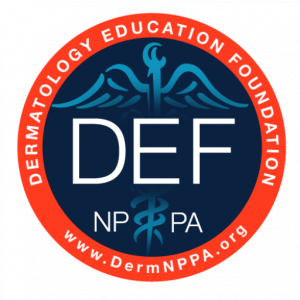Promising Data for Investigational Biologics for AD and HS Presented at AAD Annual Meeting 2023
Two investigational biologics show promise for the treatment of hidradenitis suppurativa (HS), while a third novel biologic is being explored in atopic dermatitis (AD), according to data presented at the American Academy of Dermatology (AAD) Annual Meeting in New Orleans in March.
Izokibep is an interleukin-17A (IL-17A) in development by Acelytin, Inc. and Inmagene Biopharmaceuticals for the treatment of HS and psoriatic arthritis. Topline 12-week data from a Phase 2b/3 trial of izokibep in treating patients with moderate-to-severe HS show that 71% of participants achieved Hidradenitis Suppurativa Clinical Response (HiSCR) 50, 57% achieved HiSCR75, 38% achieved HiSCR90, and 33% achieved HiSCR100.
The open label Part A of the study for which the data are reported involved 30 participants from 9 sites in the U.S. who received 160 mg of izokibep dosed subcutaneously every week. Inmagene reports that the participant demographics were highly consistent with historical studies in HS and included Hurley Stage II and III patients. The double-blind, placebo-controlled Part B of this trial is ongoing, and a second Phase 3 pivotal clinical trial in HS is being accelerated.
The most common adverse event was localized mild-to-moderate injection site reactions (ISRs). There was no evidence of increased risk of infection and there were no candida events reported through week 12.
Also in development for HS, as well as for psoriasis, is bimekizumab from UCB. Results from two Phase 3 studies (BE HEARD I and BE HEARD II) show that bimekizumab achieved statistically significant and consistent clinically meaningful improvements over placebo in the signs and symptoms of HS at week 16, which were maintained to week 48.
The two studies (n=505 in BE HEARD I; n=509 in BE HEARD II) evaluated two dose regimens of bimekizumab (320 mg every two weeks [Q2W] and 320 mg every four weeks [Q4W]) versus placebo over the 16-week initial and the 32-week maintenance treatment periods.
At the every-two-week dose, a significantly higher proportion of patients treated with bimekizumab achieved HiSCR50, the primary endpoint, at week 16 vs. placebo in BE HEARD I and BE HEARD II (47.8 percent vs. 28.7 percent [p=0.006] and 52.0 percent vs. 32.2 percent [p=0.003], respectively). A greater proportion of patients treated with bimekizumab every four weeks achieved HiSCR50 at week 16 than placebo in BE HEARD I and BE HEARD II, with statistical significance achieved in BE HEARD II (45.3 percent vs. 28.7 percent [p=0.030] and 53.8 percent vs. 32.2 percent [p=0.004], respectively).
A greater proportion of patients treated with bimekizumab achieved HiSCR75, a key secondary endpoint, at week 16 than placebo. Patients treated with bimekizumab in both studies experienced improved measures of health-related quality of life compared with placebo at week 16.
The safety profile of bimekizumab across BE HEARD I and BE HEARD II was consistent with previous of the biologic agent in inflammatory diseases, with no new safety signals observed. The most common treatment emergent adverse events (TEAEs) on bimekizumab over 16 weeks were hidradenitis (7.2 percent in BE HEARD I and 8.8 percent in BE HEARD II), oral candidiasis (4.4 percent in BE HEARD I and 6.7 percent in BE HEARD II), headache (7.0 percent in BE HEARD I and 5.8 in BE HEARD II), and diarrhea (7.0 percent in BE HEARD I and 5.3 percent in BE HEARD II).
UCB expects to submit global regulatory applications for bimekizumab in moderate to severe HS starting in the third quarter of this year.
Data for rocatinlimab, an investigational product in patients with moderate-to-severe atopic dermatitis from Kyowa Kirin Co., Ltd., show that treatment is associated with a statistically significant reduction in mean serum IgE concentrations below baseline by Week 16. Rocatinlimab inhibits OX40, which is an immune molecule involved in activating inflammatory cells that play an integral role in the development of AD and other inflammatory disorders.
Additional data from a Phase 2b, multicenter, double-blind, placebo-controlled trial, show that treated patients had meaningful reductions in sleep disturbance and itch, compared to placebo. For the trial, adults were randomly assigned to subcutaneous rocatinlimab every 4 weeks (Q4W; 150 or 600mg) or every 2 weeks (300 or 600mg) or placebo, for 18 weeks, followed by an 18-week active treatment extension and a 20-week off-treatment follow-up (Week 56). Overall, 267 patients were randomized (rocatinlimab: n=210; placebo: n=57).
There were greater reductions in Dermatology Life Quality Index (DLQI) scores in the rocatinlimab groups compared with placebo up to Week 16; scores continued to improve in the rocatinlimab groups to Week 36 and were maintained during the off-treatment period.
The most frequent TEAEs were nasopharyngitis, worsening of AD, pyrexia and chills.
